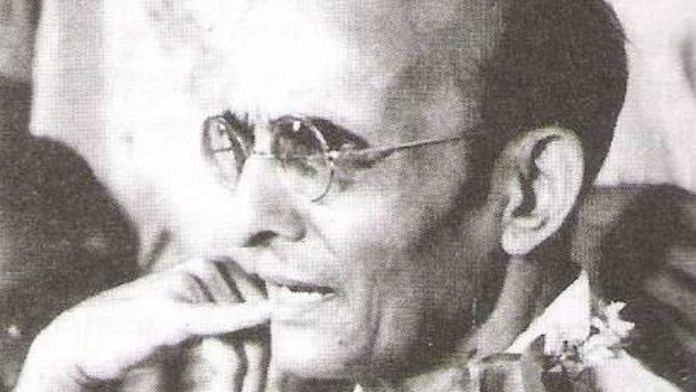India’s religious diversity has once more been highlighted by the latest Pew survey — Religion in India: Tolerance and Segregation. Diversity, moreover, is a matter of belief in one’s religion but with a keen awareness that there are others who do not profess or belong to the same faith. It would be a far stretch to call this approach ‘unity in diversity’ as Nehru had envisioned India’s unique nationality. Unlike Europe but perhaps more like America, Indians arguably prefer ‘toleration’ rather than ‘secularism’ as the mechanism by which to live with religious diversity.
Toleration, as the survey reveals in stark statistics, takes the form of policing the taboos of dining and marriage or in short, everyday social life. In terms of the Pew survey then, ‘toleration’ has gone hand-in-hand with ‘segregation’ as religious communities overwhelmingly prefer internal uniformity and boundedness over and above mixing and mingling with distinct others. This blunt conclusion defies easy political ideological moorings and inheritances.
Consider, for instance, that Vinayak Damodar Savarkar, the founding ideologue of Hindutva, was a believer in inter-dining. By contrast, Mahatma Gandhi, the icon of Hindu-Muslim friendship and who spearheaded the global Khilafat for imperial Muslim rights was staunchly opposed to inter-dining and inter-marriage. Today’s India, then, has confirmed both the ascendancy of Hindutva and its ardent critic Gandhi’s views on everyday social life. Greater nuance, complexity and longer-term data will be required to show whether there is in fact a strong co-relation between the rise of political Hindutva and social segregation as the dominant way of living with religious diversity.
Gandhi’s views have not prevailed in any simple sense. Rather and since 1950 and over the course of India’s democratic life, religious diversity as lived segregation has made four related issues not only contentious but viscerally salient to Indian political and social life.
Also read: Who is your neighbour? What we are not seeing in Pew study on India
Women: Subject of India’s lived segregation
One, lived segregation, toleration or even secularism (call it what you will) has essentially been about women. Women (and the Pew survey does not specify, let alone amplify this critical element) are the primary subject of India’s religious life. From Ambedkar’s still-born Hindu Code Bill through Shah Bano, to say nothing of Roop Kanwar’s Sati, to the current issues of triple talaq, Sabarimala and love-jihad — all are centred on women.
Debates on religion, its legal boundaries and social policing, in short, are debates on women in India. Calling this ‘patriarchy’ does not explain it away. Not because it is not so, in fact it is intensely patriarchal, but such a reckoning can only be a starting point rather than a conclusion of the situation. In a recent debate on the Pew survey, when I pointed out the centrality of women to this debate, all men on the panel readily agreed, that women bore the burden of India’s toleration and segregation. But this was quickly explained away as ‘patriarchal’ and even ‘civilisational’, as though this was background noise or just deep (unshakeable) reality as they aimed to centre and celebrate the findings of the survey as it testified to India’s diversity.
Also read: Why have Modi’s rivals failed to challenge him? This survey of Indians’ religiosity has clues
Caste as segregation, and individual rights
Two, segregation is indeed, caste. Separation and social distance or the debate about mixture and mingling in India are shot through with caste. There seems to be little hope or even an exit path from the cage of caste. The survey reveals that every religious persuasion, even those that are opposed to it on religious grounds, is managed by caste hierarchies and boundaries. Caste, as Ambedkar rightly pointed out, is the ‘anti-social’ social truth of India. That caste has ossified, thrived, and proliferated in India’s competitive democracy deserves more thought. The strict numbers of surveys and censuses cannot explain the magnitude of the problem, let alone devise methods for its dismantling.
Three, both the caste question and the making of women as the frontier of India’s segregated religious diversity have ensured that groups or communities have powerfully overwhelmed individual rights. The individual, as the Constitution declared and made manifest, was the bearer of rights. In the reality of India’s legal redefinition of religious life, and over the course of seventy years, the individual seems today entirely depleted and defeated. Even any claims to it seem like liberal (even ‘foreign’) pieties in a milieu committed to deep social conservatism.
Finally, and to return to Gandhi and Savarkar, inter-dining goes to the heart of what has been called ‘assimilation’. Uniformity of cultural and social practices and a complete obedience to a national assimilative project (a la French secularism) is what Gandhi was opposed to. Aggressive incorporation of distinction as prosecuted and policed by the State made the Mahatma the uber-individualist, baulk at inter-dining as hypocrisy at best. Gandhi recognised these (including conversion and shuddhi) as part of a project of a dangerous, even violent,assimilation that could only have one winner in India.
The Pew survey, despite all the celebration of Indian religious diversity, has left the question open whether indeed Savarkar and his assimilative project will prevail.
Dr Shruti Kapila teaches modern Indian history and global political thought at the University of Cambridge. Twitter: @shrutikapila. Views are personal.
(Edited by Anurag Chaubey)



